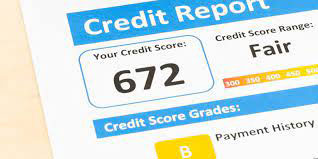Qualifying for a mortgage loan can be a daunting prospect for many. The fear of rejection and complex jargon can make the process seem intimidating. However, in this article, we'll show you that it's not as difficult as it may seem. We'll break down the steps, explain the terminology in simple language, and provide tips to make it easier for you to secure that dream home. So, let's get started!
Understanding Mortgage Loans
Before we dive into the qualification process, let's demystify some of the terminology.
Mortgage
A mortgage is a financial loan utilized for purchasing a residence. The property itself acts as security for the loan, implying that if you are unable to make payments, the lender has the right to assume ownership of your home.
Interest Rate
This is the cost of borrowing the money, expressed as a percentage. A lower interest rate means you'll pay less over the life of the loan.
Down Payment
This is the upfront amount you pay when purchasing a home. Typically, the more you can put down, the lower your monthly payments.
Qualifying for a Mortgage: Easier Than You Think
Now that we've clarified some of the terminology, let's look at how to qualify for a mortgage loan in simple steps.

Step 1: Check Your Credit Score
Your credit score plays a crucial role in determining your eligibility for a mortgage loan. It reflects your financial history, including your payment history, credit utilization, and the length of your credit history.
Lenders typically prefer borrowers with higher credit scores. You can check your credit score for free from various online sources. Make sure it's accurate and, if needed, work on improving it by paying off debts and ensuring timely bill payments.
Step 2: Determine Your Budget
Before you start shopping for a home, you should have a clear understanding of your budget. This involves calculating your monthly income, expenses, and any outstanding debts.
A common rule of thumb is that your monthly housing costs (including mortgage, taxes, and insurance) should not exceed 28% of your gross income. Creating a budget can help you assess your financial health and identify areas where you can cut back to save more for a down payment.
Step 3: Save for a Down Payment
While there are mortgage loan options that allow for lower down payments, saving for a sizable down payment can be advantageous. It not only reduces your monthly payments but also makes you more appealing to lenders. Explore down payment assistance programs or consider setting up a dedicated savings account to help you reach your down payment goal.
Step 4: Get Pre-Approved
A pre-approval letter from a lender is like having a golden ticket when house hunting. It shows sellers that you're serious and financially prepared to make a purchase. To get pre-approved, you'll need to provide your financial information, including your credit score, income, and debts. You can get pre-approved from multiple lenders to compare offers and find the best one that suits your needs.
Step 5: Choose the Right Mortgage Type
There are various mortgage types available, such as fixed-rate mortgages and adjustable-rate mortgages. Fixed-rate mortgages offer stable monthly payments, while adjustable-rate mortgages may start with lower rates but can increase over time. Selecting the right type depends on your financial situation and risk tolerance.
Step 6: Compare Lenders
Not all lenders are created equal. Shop around and compare offers from multiple lenders. Consider factors such as interest rates, closing costs, and the level of customer service they provide. Don't forget to read online reviews and ask for recommendations from friends and family.
Step 7: Gather Your Documents
Lenders will require a range of documents to process your mortgage loan application. These typically include:
- Pay stubs
- W-2s or 1099s
- Bank statements
- Tax returns
- Photo ID
- Proof of any additional income
Step 8: Apply for the Mortgage
Once you've chosen a lender and gathered your documents, it's time to apply for the mortgage loan. The lender will review your application and financial documents to determine if you qualify. Be prepared for possible requests for additional documentation during the underwriting process.
Step 9: Stay on Top of Your Finances
During the mortgage application process, it's essential to maintain financial stability. Avoid making large purchases, taking on new debt, or changing jobs, as these factors can impact your eligibility. Continue paying your bills on time and communicate with your lender if any financial changes occur.
Down Payments: A Smaller Barrier

Traditionally, a significant down payment was necessary to qualify for a mortgage. In the past, lenders often required a 20% down payment. However, times have changed, and many lenders now offer mortgage options with lower down payment requirements.
Low down payment options
Here are some of the considerable options for the low down payment.
FHA Loans: The Federal Housing Administration offers loans with down payments as low as 3.5%.
VA Loans: If you're a veteran or an active-duty service member, VA loans often require no down payment.
USDA Loans: For rural and suburban homebuyers, the USDA offers zero-down mortgages.
The Role of Mortgage Pre-Approval
Getting pre-approved for a mortgage loan is a significant advantage when it comes to qualifying for a home loan. It's a thorough evaluation by a lender of your financial situation, and it demonstrates to sellers that you're a serious buyer.
Benefits of pre-approval
Let’s have a look at some of the benefits of pre-approval.
Know your budget: Pre-approval helps you understand how much home you can afford.
Competitive advantage: Sellers are more likely to accept offers from pre-approved buyers.
Faster closing process: Pre-approval streamlines the mortgage application process.
Conclusion
Qualifying for a mortgage loan doesn't have to be an intimidating process filled with complex jargon. By following these simple steps, understanding the key terminology, and staying financially responsible, you can make the journey to homeownership a lot smoother.
Remember, it's all about careful planning, discipline, and choosing the right lender. So, go ahead, take that first step, and soon, you might be unlocking the door to your dream home. Happy house hunting!




